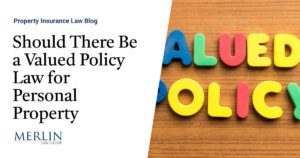What Auto Insurers Must Know: Triple I’s Report on Social Inflation’s Adverse Impact on Claims
Continually higher than expected inflation has significantly increased auto insurance claim costs over the past decade, according to a new report from the Insurance Information Institute. The report examines the impact of inflation on commercial and personal auto liability claims, finding that increasing prices have driven losses billions of dollars higher.
Inflation caused up to $105 billion in loss payments from 2013 to 2022
The analysis shows that from 2013 to 2022, inflation increased auto liability losses by $96-105 billion. That constitutes 8.6-9.4% of the $1.1 trillion in total booked losses for commercial and personal auto liability over the period. The inflationary increases stem from a combination of economic inflation and “social inflation.”
Insurers must deal with “social inflation” as well as price inflation
Economic inflation reflects rising prices overall in the economy, as measured by indices like the Consumer Price Index. Social inflation refers to factors that increase insurance claim costs beyond the overall rate of economic inflation. This can include rising litigation costs, broader definitions of liability, “nuclear” verdicts, and other systemic issues that disproportionately impact insurance claims compared to the general economy.
Impact on Commercial Auto Liability
For commercial auto liability, increasing inflation drove up losses by $35-44 billion from 2013 to 2022 according to the report. That translates to 19-24% of total commercial auto liability losses during the period.
Commercial auto liability loss development factors, which compare how losses change over time, indicate significant inflationary pressures. These factors rose steadily from 2013 to 2019 before slowing in 2020 likely due to the pandemic. But in 2022 the factors spiked to their highest level in over a decade, signaling substantial inflation.
The report notes that social inflation was likely the primary driver of increasing losses prior to 2021, when economic inflation was low and stable. But recent inflation stems from a combination of social and economic factors.
During the pandemic claims declined but severity increased
An interesting finding is that while claim frequency dropped during the pandemic for commercial auto claims, severity skyrocketed. The average commercial auto liability claim size has grown over 70% since 2013, far outpacing economic inflation. This divergence suggests the impact of social inflation.
There is also evidence of a slowdown in claims settlements during the pandemic, as courts closed, and proceedings moved online. This temporary slowdown appears to have reversed by 2022. Overall, the report estimates inflation is increasing commercial auto losses by 2.3-2.7% annually.
Impact on Personal Auto Liability
For personal auto liability, the report concludes increasing inflation drove losses $61 billion higher for the period from 2013 to 2022. That equates to approximately 6.5% of total personal auto liability losses.
Like commercial auto, personal auto liability has seen loss development factors rise steadily until 2020 before spiking in 2021 and 2022. And the trend remains that losses are climbing faster than premiums, putting pressure on insurer profitability.
Personal auto lines experienced less social inflation in claim costs than commercial lines
However, social inflation seems to have a lower impact on personal auto liability versus commercial, at least as a percentage of losses. The report speculates this anomaly results from the smaller average vehicle size, lower policy limits, and lack of corporate defendants in personal auto. Still, because personal auto is a much bigger line of insurance, the total dollar impact of inflation is greatest there.
Personal auto liability also witnessed a notable jump in claim severity after 2019, almost tripling from 3% annual growth to 9% after the pandemic’s onset. Yet frequency declined, though not enough to offset the severity impact.
Overall, the report estimates inflation is adding just 0.6% to personal auto losses annually. While lower than commercial auto liability, it still represents billions in additional costs.
Combined Auto Liability Impacts
The report looked at both commercial and personal auto liability combined, finding increasing inflation drove almost $100 billion in extra losses over the past decade. Auto insurance represents a substantial cost for both businesses and individuals, so this massive inflationary effect has significant economic implications.
The report’s analysis affirms social inflation was the primary driver until 2021, when surging economic inflation became a larger contributor. Evidence also suggests the pandemic temporarily disrupted normal settlement patterns in 2020 and 2021 before a return to trend.
Across both lines, the report quantifies the average annual impact of inflation at 0.6% for personal auto and 2.3-2.7% for commercial auto liability. But the actual impact varies significantly by year, with the effects accelerating in 2021-2022 as losses mount.
The graph below show the differential between economic inflation measured by the Consumer Price Index, and the social inflation experienced by the automobile insurance industry between 2008 and 2022. The columns show the increase in inflation between 2008 and 2019, and then from 2019 to 2022. Between 2009 and 2019, (in blue) the Consumer Price Index grew twice as fast as auto insurers business costs, However, between 2019 and 2022, (in yellow) the auto insurers business costs shot up at the rate of three times the consumer price index. As a result, by 2023, auto insurers business costs had exceeded the consumer price index’s increase between 2008 and 2022 by fifty percent.
The report’s conclusions and Implications
The report concludes that its findings demonstrate the power of traditional actuarial techniques to identify and quantify inflationary pressures. The loss development approach used in preparing the report provided data-driven evidence of social inflation’s increasing burden on auto liability claims.
While the precise mix of economic vs. social inflation requires further analysis, according to the report, the implications are clear: insurers face rapidly escalating claim costs driven by systemic factors beyond their control. Increasing inflation will almost certainly necessitate rising premiums to cover swelling losses. This inflationary effect will make pricing insurance accurately more difficult. Only by understanding and reforming the root causes can the insurance system develop pricing adequate and fair for all stakeholders.
A copy of the free 27-page Insurance Information Institute report can be obtained by clicking below:
“Impact of Increasing Inflation on Personal and Commercial Auto Liability Insurance‘,” by Jim Lynch, FCAS, MAAA, Dave Moore, FCAS, MAAA, and
Dale Porfilio, FCAS, MAAA, Insurance Information Institute.
About the Insurance Information Institute
The Insurance Information Institute (“Triple-I”) wants people to have the information they need to make educated decisions, manage risk, and appreciate the essential value of insurance.
With more than 50 insurance company members — including regional, super-regional, national and global carriers — The Triple-I is the #1 online source for insurance information. Its website, blog and social media channels offer a wealth of data-driven research studies, white papers, videos, articles, infographics and other resources solely dedicated to explaining insurance and enhancing knowledge.
Unlike other sources, the Triple-I’s sole focus is creating and disseminating information to empower consumers. It neither lobbies nor sells insurance. It only provides objective, fact-based information about insurance – information that is rooted in economic and actuarial soundness.





